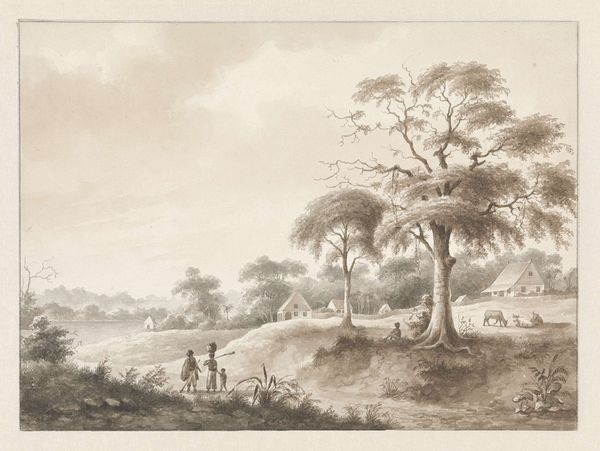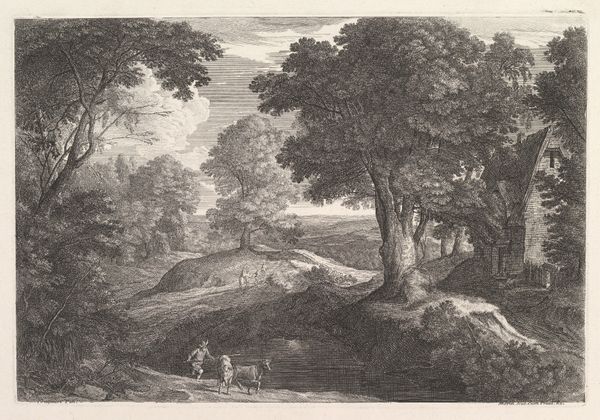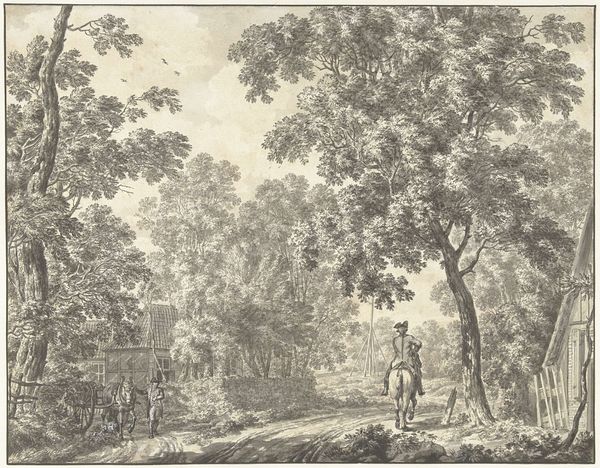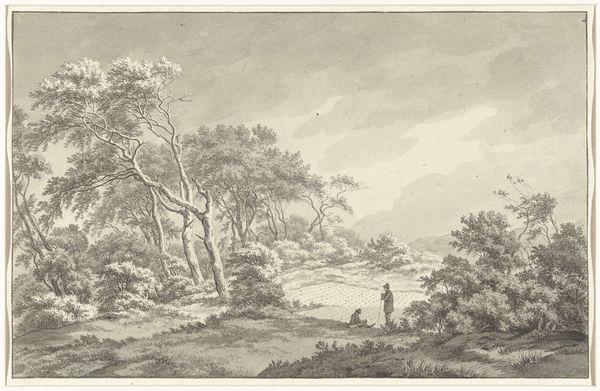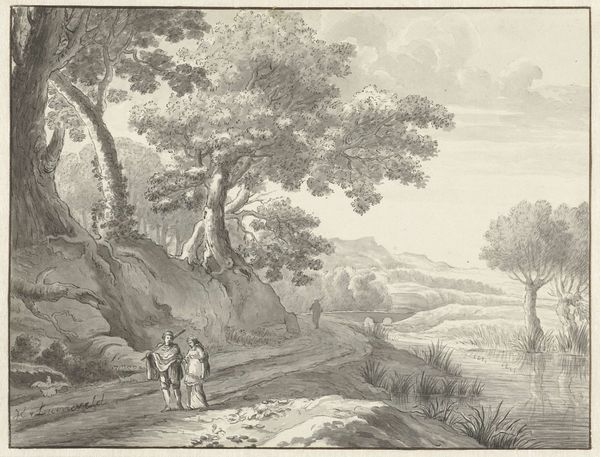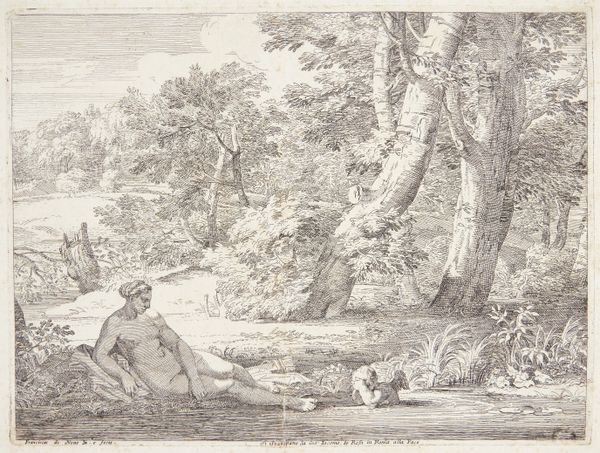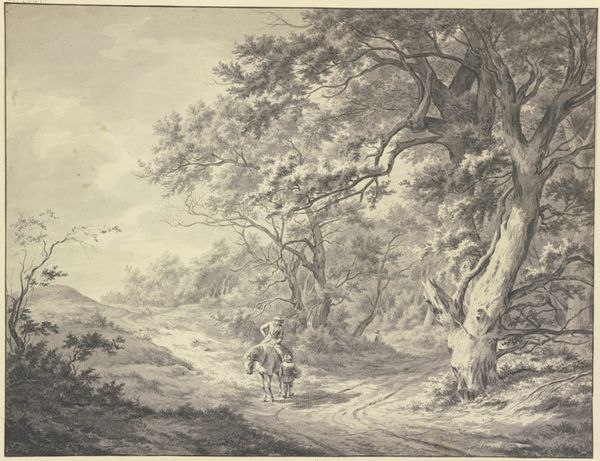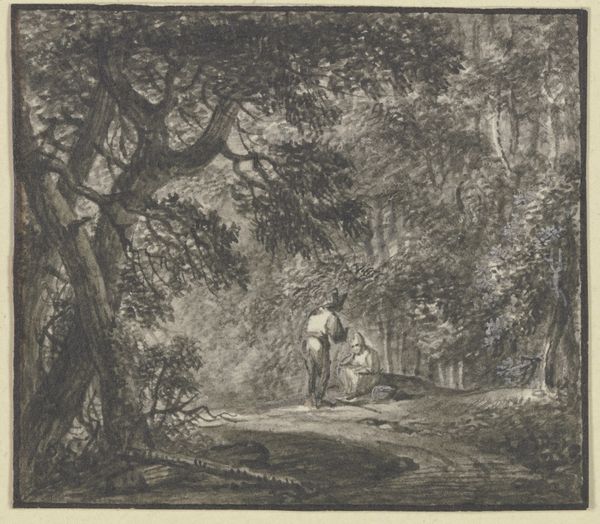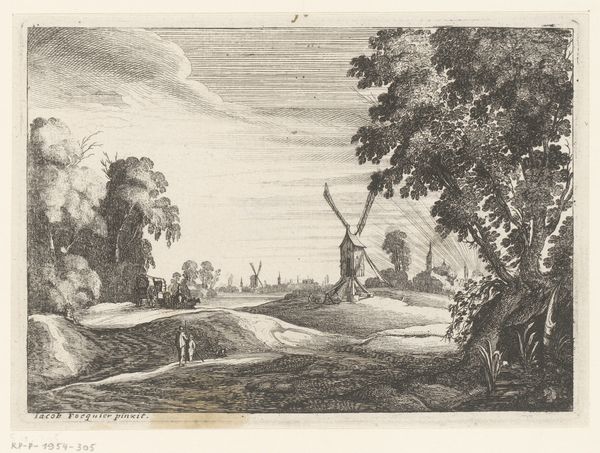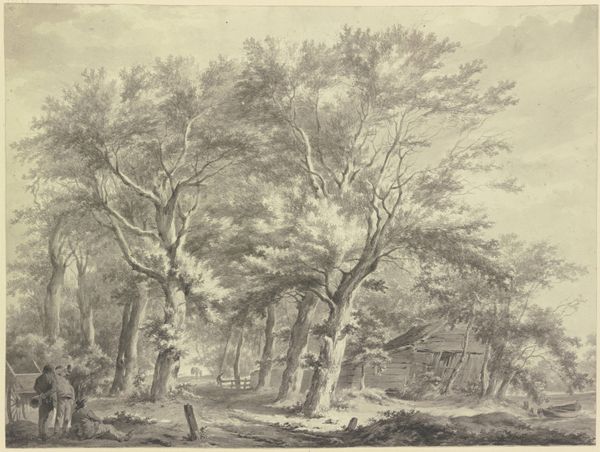
drawing, ink
#
landscape illustration sketch
#
drawing
#
pen illustration
#
pencil sketch
#
landscape
#
botanical illustration
#
ink
#
ink drawing experimentation
#
folk-art
#
pen-ink sketch
#
botanical drawing
#
genre-painting
#
rococo
Dimensions: height 178 mm, width 235 mm
Copyright: Rijks Museum: Open Domain
Editor: This is Johann Heinrich Keller's "Landscape with woman and boy on a country road," created sometime between 1702 and 1765. The monochromatic palette creates a sort of hazy, dreamlike atmosphere. What do you see in this piece, especially considering its historical context? Curator: It's easy to see this as a pleasant pastoral scene. But what about labor, gender, and power? This image speaks to a very specific historical reality, one where the labor of women and children was essential to the rural economy, often unseen and undervalued. Consider the woman carrying a heavy load, and the boy seemingly following behind. Editor: That’s a compelling point. I hadn't really considered the socioeconomic aspect of it. Are you saying this image is some kind of commentary? Curator: Perhaps not intentionally. But art doesn't exist in a vacuum. This image reflects and reinforces societal norms. Rococo art is generally interpreted as celebratory, so it's relevant to ask who is celebrating, and who is being excluded or exploited in order to do that celebrating? How does class intersect with this idealized landscape? Where are the people who built the road, tilled the fields? Editor: I see. It’s about examining the unseen power dynamics. What did those dynamics entail for women and children in rural communities in that period? Curator: Exactly. Their stories were largely omitted from mainstream historical narratives, thus devaluing both them and the important contributions they made to that history. Even the word ‘landscape’ carries a complicated weight in how we position humanity relative to nature. It emphasizes human viewing of nature as property or something to be passively enjoyed as aesthetics. It also conceals realities. The "Landscape" hides their contribution behind pleasant aesthetics, reinforcing existing power dynamics through its very composition. Editor: This has totally reshaped my perspective. It's incredible how a simple landscape drawing can open up such a complex dialogue about society, history, and power. Curator: Indeed. By looking at the drawing with this in mind, it provides access into past experience of a social role to see that their actions are historically situated. It invites questions about what kind of reality the image implies about social roles, practices, and identities in our societies.
Comments
No comments
Be the first to comment and join the conversation on the ultimate creative platform.
